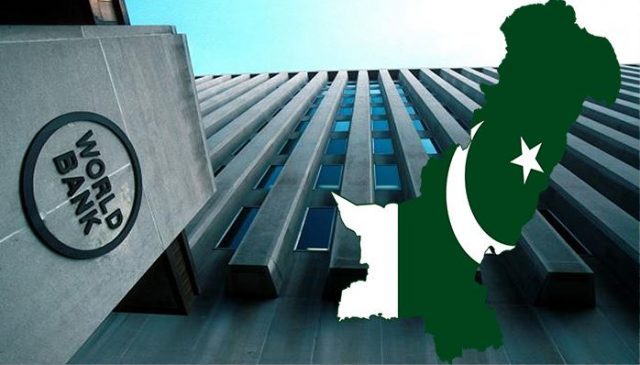ISLAMABAD: The resurgence of recent infection rates and slow vaccination coupled with high inflation rate and consolidation policies could impact Pakistan’s nascent and fragile economic recovery and worsen poverty, according to a World Bank report.
In its flagship ‘Pakistan Development Update-Navigating in Uncertain Times’ released on Tuesday, the World Bank said the country had been showing signs of a fragile economic recovery with a gradual resumption of economic dynamism and was expected to achieve a growth rate of 1.3pc and strengthen to an average of 2.7pc in FY23.
The baseline economic growth forecast, however, is highly uncertain, especially given the third and a more contagious wave of the pandemic currently circulating in the country, it said. The “resurgence in infection rates and slow vaccination deployment poses downside risks to the economic outlook and near-term economic prospects are subdued”, it added.
At the same time, economic activity is projected to be dampened in the short-term by fiscal consolidation measures associated with the IMF stabilisation programme, which is expected to resume as the economy regains its footing. The outlook entails a gradual post-Covid recovery, during which economic growth is expected to remain below potential, reaching 1.3pc of GDP in FY21 and strengthening to 3.4pc in FY23.
The fiscal deficit, excluding grants, is projected to reach 8.4pc of GDP in FY21, partly due to subdued economic activity and the settlement of arrears in the power sector. As critical revenue-enhancing reforms gain pace, the fiscal deficit (excluding grants) is projected to gradually narrow to 7.8pc in FY22 and 7pc of GDP by FY23.
Under the baseline scenario, revenue collection is expected to increase over the medium term as growth recovers and the government implements structural reforms related to GST harmonisation, rolls back tax expenditures, streamlines tax rates, and improves the withholding tax regime.
The public debt including govt guaranteed debt-to-GDP ratio is projected to peak at 94.4pc by end-FY22 on account of elevated fiscal deficits, before easing to 94.1pc by FY23. The decline in the debt-to-GDP ratio will be mainly due to moderately higher economic growth and declining primary deficits.
The bank said that Pakistan’s poverty rate in FY20 was expected to have increased for the first time in two decades due to Covid-19. The sizeable labour market shock brought about by the Covid-19 containment measures and economic slowdown is expected to have translated into an increase in poverty.
“Simulation results indicate that poverty in FY20, as measured at the official national poverty line, might have increase by 2.3 percentage points, which translates into 5.8 million additional people falling into poverty as a result of the pandemic”. After two decades of uninterrupted decline in poverty, the Covid-19 pandemic is expected to have reversed the progress of more recent years.
The pandemic is expected to not only increase poverty, but also worsen the depth and severity of poverty among the already poor, as indirectly demonstrated by the increase in the share of the severely food insecure population, which stood at 10pc during the lockdown phase, compared to 3pc at the baseline. Rural areas are expected to have suffered from an increase in poverty incidence at least as large as the one anticipated in urban areas.
Also, prolonged high food inflation can increase risks to food security. The COVID-19 lockdown disrupted supply chains that affected the availability of agricultural inputs, such as seed, fertiliser, and pesticides. This combined with exceptionally heavy rains during the monsoon and pest attacks, led to reduced yield, food shortages, and high food inflation. “Protracted disruptions to trade and supply chains, irregular rainfall patterns, and future locust attacks can prolong the period of elevated food inflation and increase food security risks”.
Structural reforms remain critical macroeconomic stability. With the gradual decline in infection rates and ongoing nascent economic recovery, the government can refocus its attention to the implementation of critical structural reforms.





Structural reforms remain critical macroeconomic stability. With the gradual decline in infection rates and ongoing nascent economic recovery, the government can refocus its attention to the implementation of critical structural reforms.